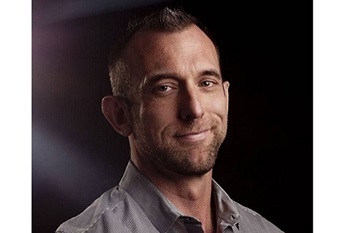With the digital and offline worlds more entwined than ever, products are expected to weave seamlessly into the fabric of people’s lives and experiences, regardless of their unique journeys. Donald Chesnut, SapientRazorfish Chief Creative Officer, gives his unique perspective on customer experience in the digital age.
Traditionally a front stage element, customer (and similarly, user) experience stands to become an influential piece of business transformation. 2017 is the year of convergence for user and customer experience, the year in which the two become one – a single brand experience that encompasses all touchpoints across all devices, all the time. With this, great customer and user experience thinking will shift from solely benefitting user interactions to transforming business’ underlying rules, policies, and architecture. It’s as if we took customer thinking and started applying it to a much bigger stage. The knowledge that we as brands and marketers have gathered via experience design will be internalized and applied in two forms: via service design and core product innovation.
Reimagining business with service design
When we speak of elevating experience design (this combination of customer and user experience) into the realms of business transformation, we have to begin with the user, the actual person we are designing for. It’s not enough to focus on the user, business leaders must actively involve the user – his/her history, needs, lifestyle, and (most important) expectations – in the service design process. This requires an extensive understanding of how your target audience thinks in certain situations, feels in certain spaces, and interacts with certain devices. All, as you can see, key pillars of intuitive experience design.
And if you’re looking to achieve this kind of alchemy, then you need to take multidisciplinary teams to the next level. Technologists, experience designers, strategists, business consultants, and creative makers must be brought together to elevate the world of experience design into business consulting, thereby raising the altitude of problems tackled and depth of solutions delivered. We’re talking about strategic shifts and policies, data integration, and deep technology implementation – topics that have previously been rare and far between in the world of experience design.
Last, and certainly not least, make this process an iterative one. Give the aforementioned group an agile environment in which they can prototype and model – a core necessity when it comes to harnessing the full power of experience design.
Innovating around your core products
The reason why the effects of experience design have begun to trickle into business transformation is because consumers no longer interact with brands in isolation. They analyze both services and products in the context of their personal environments or, in marketing terms, ecosystems. As a result, expectations around connectivity are now driving a new level of innovation in everyday products – including the ability of products to plug into the ecosystems of other brands. Either way, products are expected to weave seamlessly into the fabric of people’s lives and experiences (think the Internet of Things within the context of smart homes), regardless of their unique journeys.
Data makes this possible, while experience design turns that data into effective product innovation. A great example lies within the automotive industry where customer data management across a network of industries allows for informed experience design to be translated into valuable product innovation.
Upholding experience design’s future
There are several similarities between service design and product innovation that uphold the future of experience design:
● Journeys: These represent a standard model in experience design today, but truly meaningful and useful journeys are still hard to find. Effective service and product design will require that the journey-centricity of experience design combines with cutting edge technology (such is the case with data-driven journeys) to overcome different altitudes of business problems.
● Prototyping: The next wave of experience design is enabled by rapid prototyping. Define it, build it, and test it. Shift your thinking from designing the future to iterating tomorrow, the next day, the day after that, and so forth. Focus on getting real, and getting real fast.
● Team: Applying experience design to business transformation successfully relies upon multiple perspectives coming together to understand the viability of both services and products. Diversity in all its forms enables groundbreaking creativity, so how do you get the right mix of disciplines, gender, backgrounds, and capabilities to unveil great ideas?
● Data: There is an undeniable need – and opportunity – for data and analytics to push experience design to the forefront, and enable advantageous service and product design.
Service and product design may signify the next wave of business transformation, but it’s the customer and user experience knowledge that you have that will allow you to ride it.
By Donald Chesnut
Chief Creative Officer
SapientRazorfish
